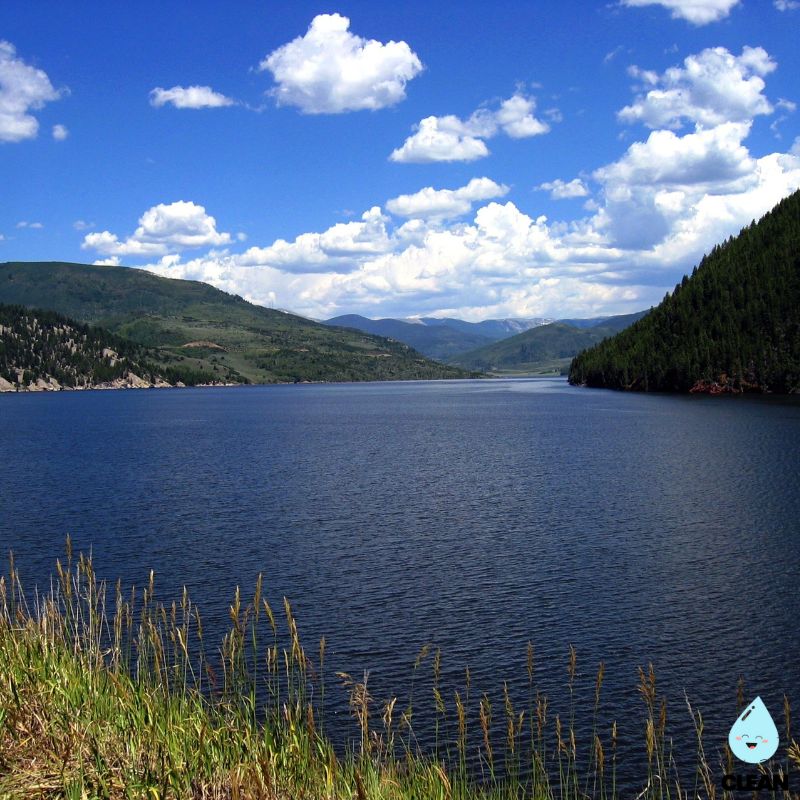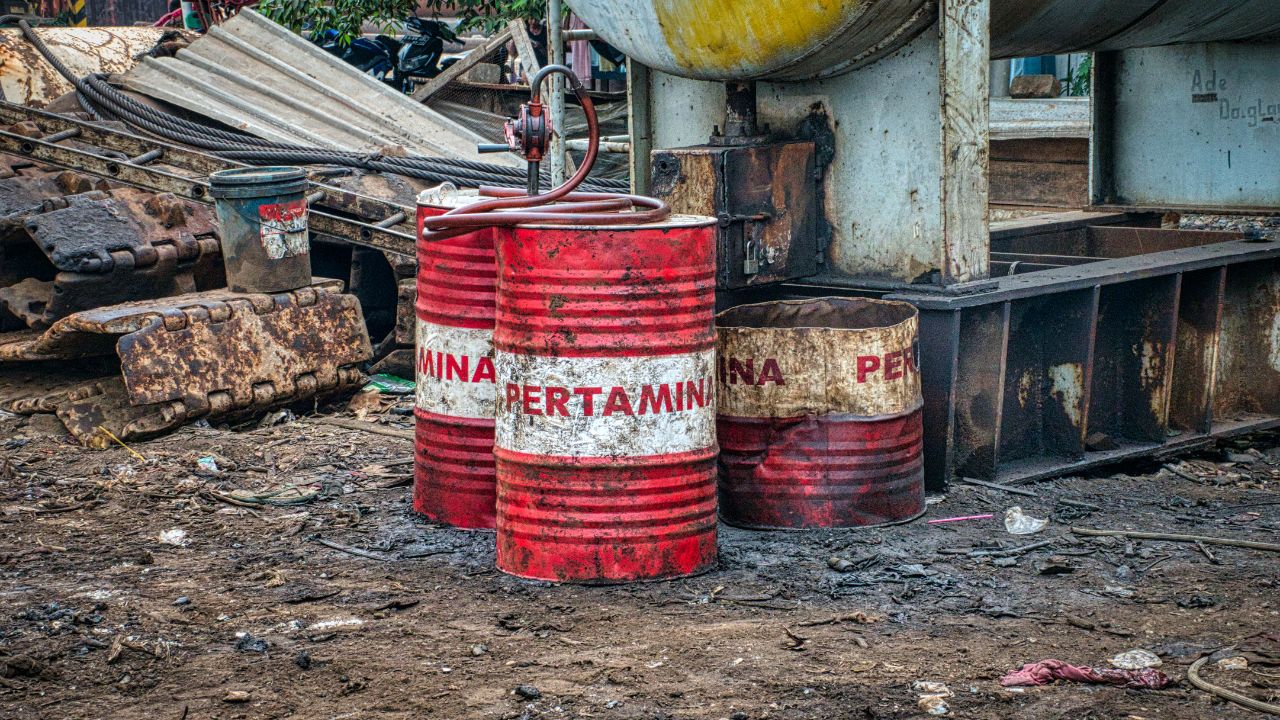West Virginia Water Quality at a Glance
multiple pollutant sources
Is West Virginia Water Safe to Drink?
Critical Multi-Source Contamination Crisis – West Virginia faces severe water quality challenges from multiple pollution sources. 49% of raw water sources contain PFAS above EPA health advisories, affecting 130 community water systems serving 700,000 residents. Major concerns include coal mining contamination (acid mine drainage, heavy metals), PFAS “forever chemicals” from industrial pollution, and legacy contamination from the notorious DuPont Parkersburg facility. Rural communities face additional risks from abandoned mines and inadequate infrastructure.
⚠️ Key Concerns for West Virginia Residents
- PFAS “Forever Chemicals”: Found in 130 water systems affecting 700,000 people; EPA funding for cleanup recently canceled by Trump administration
- Coal Mining Legacy: Acid mine drainage contaminating 12,000+ miles of waterways; heavy metals including arsenic, lead, manganese in groundwater
- Industrial Contamination: DuPont Parkersburg C8/PFOA lawsuit legacy; ongoing PFAS discharges into Ohio River affecting multiple communities
- Rural Water Crisis: 23% rely on private wells (vs 15% nationally); many small systems violate Safe Drinking Water Act; inadequate monitoring of private wells
Read the full report below for detailed analysis, state-specific data, and actionable recommendations for West Virginia residents.
West Virginia – The Mountain State – Water Quality Report 2025: PFAS Testing, Infrastructure Concerns & Safety across your state
West Virginia’s water infrastructure serves approximately 1.8 million residents across rugged mountainous terrain, from the Eastern Panhandle to the Ohio River Valley. The state operates through a network of 448 public water systems, ranging from West Virginia American Water, which serves over 600,000 customers statewide, to smaller rural systems providing essential services to remote mountain communities. West Virginia’s water sources include the Ohio, Monongahela, Potomac, and New river systems, along with numerous groundwater aquifers that supply both urban centers and isolated rural areas.
Despite abundant water resources, West Virginia faces unprecedented infrastructure challenges. Recent studies have found that 378 of the state’s 448 water systems violated the Safe Drinking Water Act between 2016-2019, affecting over 912,000 residents. The state has emerged as a national focal point for PFAS contamination, with 130 of 279 tested public water systems showing PFAS levels above EPA health advisories, affecting approximately 700,000 residents. West Virginia has received $18.9 million in federal PFAS funding and additional infrastructure investments from the Biden-Harris Administration’s Bipartisan Infrastructure Law to address these challenges, focusing on drinking water safety, PFAS treatment, and aging infrastructure replacement. The state’s commitment to water quality improvement is demonstrated through partnerships between the West Virginia Department of Environmental Protection (WVDEP), local utilities, and federal agencies working to ensure safe, reliable water access for all residents while addressing the legacy of industrial contamination that has historically challenged the state’s water systems.

West Virginia Water Quality: Current Status (2024-2025)
Statewide Compliance and Testing
- Overall Compliance: West Virginia faces significant water quality challenges, with 378 of 448 public water systems violating federal Safe Drinking Water Act standards at least once between 2016-2019, affecting over 912,000 residents.
- PFAS Contamination: West Virginia has some of the highest PFAS concentrations in the country, with 130 of 279 tested public water systems showing PFAS levels above EPA health advisories, affecting approximately 700,000 residents particularly in the Eastern Panhandle and Ohio River Valley.
- Infrastructure Investment: West Virginia received $18.9 million over two years in federal funding for PFAS mitigation, though EPA recently canceled a $1 million grant under the Trump administration, along with additional infrastructure investments through the Bipartisan Infrastructure Law.
Major Water Sources and Challenges
- Ohio River Valley: Primary source for Charleston and surrounding communities, facing challenges from industrial legacy contamination including the historic 2014 chemical spill that left 300,000 residents without safe drinking water.
- Eastern Panhandle: Groundwater sources serving Berkeley and Jefferson counties show elevated PFAS contamination, particularly areas affected by military base firefighting foam activities and industrial sources.
- Aging Infrastructure Concerns: Many water systems in West Virginia’s mountainous terrain face significant challenges with aging distribution systems, making maintenance and upgrades particularly challenging and expensive, with some systems losing substantial amounts of treated water.
PFAS Contamination Response
- PFAS Protection Act Implementation: The 2023 PFAS Protection Act requires WVDEP to identify contamination sources and develop action plans, with new EPA drinking water standards of 4 parts per trillion for PFOA and PFOS taking effect with compliance required by 2029.
- Comprehensive Testing Program: Following the 2022 USGS study revealing widespread contamination in 49% of raw water sources, the state is conducting finished water testing at affected systems and implementing advanced treatment technologies including activated carbon and reverse osmosis.
- Source Identification Efforts: WVDEP is working to identify industrial polluters and establish accountability measures, building on lessons learned from the historic DuPont Parkersburg case that resulted in over $300 million in settlements, though federal funding support has recently been reduced.
Rural and Disadvantaged Communities
- Geographic Challenges: West Virginia’s mountainous terrain makes water infrastructure particularly expensive to build and maintain, with rural systems facing disproportionate costs for compliance with new regulations.
- Technical Capacity Issues: Smaller water systems often lack the technical expertise and financial resources needed to implement complex treatment technologies required for PFAS removal and other emerging contaminants.
- Federal Support Programs: Targeted funding through the Drinking Water Treatment Revolving Fund and Emergency Contaminant programs provide grants and low-interest loans to help smaller systems upgrade infrastructure and achieve compliance.
Looking Forward: 2025-2030
West Virginia’s water quality landscape is at a critical juncture as the state works to address decades of industrial contamination while preparing for new federal PFAS regulations taking effect in 2029. The state’s implementation of the PFAS Protection Act, combined with available federal infrastructure investments, represents a comprehensive approach to tackling both legacy contamination and emerging threats, though recent funding cuts present new challenges. However, successful transformation will require sustained collaboration between state regulators, water utilities, and communities to overcome the unique challenges posed by West Virginia’s mountainous geography and history of industrial activity. The state’s experience with major contamination events, from the 2014 chemical spill to ongoing PFAS concerns, has created both challenges and opportunities for building more resilient water systems that can better protect public health while supporting economic development in the Mountain State.
Recommendations for West Virginia Residents

Know Your Water Source
Contact your water utility to request annual water quality reports and ask about PFAS testing results. Visit WVDEP’s website to access your local system’s testing data and understand any contaminants of concern in your area, particularly if you live in the Eastern Panhandle or Ohio River Valley.

Support Infrastructure Investment
Stay informed about local water infrastructure needs and support utility rate structures that enable necessary improvements. Attend public meetings when utilities discuss infrastructure upgrades and PFAS treatment investments, particularly important given West Virginia’s aging distribution systems.

Consider PFAS-Certified Filtration
For areas with known PFAS contamination, especially in the Eastern Panhandle and Ohio River Valley, consider NSF-certified activated carbon or reverse osmosis filters specifically tested for PFAS removal. These can provide additional protection while utilities implement treatment upgrades.

Report Water Quality Concerns
Contact your local water utility immediately for taste, odor, or color concerns. Report suspected contamination to WVDEP’s Environmental Compliance Division at (304) 926-0440 for investigation and follow-up, especially important given West Virginia’s history of industrial contamination events.

Practice Water Conservation
Support West Virginia’s water sustainability by implementing conservation measures like efficient irrigation, rainwater harvesting, and low-flow fixtures. Reducing demand helps utilities maintain system reliability and affordability, particularly important given the state’s aging infrastructure challenges.
West Virginia Cities We Cover
Charleston Water Quality
Comprehensive analysis of West Virginia American Water’s Kanawha Valley District serving Charleston and surrounding communities. Includes information on water sources, treatment processes, infrastructure modernization, PFAS monitoring, and recovery from the 2014 chemical spill that affected over 300,000 residents.
Frequently Asked Questions
Is West Virginia’s tap water safe to drink?
Water safety varies significantly across West Virginia’s 448 public water systems. While many systems meet federal standards, 378 systems violated the Safe Drinking Water Act between 2016-2019, affecting over 912,000 residents.
The state faces particular challenges with PFAS contamination, with 130 of 279 tested systems showing PFAS levels above EPA health advisories, affecting approximately 700,000 residents. Areas of highest concern include the Eastern Panhandle and Ohio River Valley. West Virginia received $18.9 million in federal PFAS funding to address these issues, and the 2023 PFAS Protection Act requires comprehensive action plans. Residents should review their utility’s annual water quality report and consider additional filtration in areas with known contamination issues.
Why does West Virginia have such serious PFAS contamination?
West Virginia’s PFAS problems stem largely from decades of industrial manufacturing, particularly the DuPont chemical plant near Parkersburg that operated from 1951 and discharged PFOA into the Ohio River watershed.
The state now has some of the highest PFAS concentrations in the country, with contamination particularly severe in the Eastern Panhandle (from military base firefighting foam use) and Ohio River Valley (from industrial pollution). A landmark class-action lawsuit resulted in over $300 million in settlements with DuPont after internal studies revealed the company knew about health risks for decades. The EPA’s new drinking water standards limit PFOA and PFOS to 4 parts per trillion, requiring affected water systems to implement treatment by 2029.
How can I find out about my local water quality?
West Virginia residents can access water quality information through several resources:
• Annual Water Quality Reports: Contact your water utility directly for their Consumer Confidence Report, which details all testing results and any violations or concerns
• WVDEP Online Database: Visit the West Virginia Department of Environmental Protection’s website to access testing results and compliance information for your local water system
• PFAS Testing Data: The 2022 USGS study results are publicly available, and WVDEP is conducting ongoing finished water testing with results posted online
• EWG Tap Water Database: Use your zip code to search for contaminants detected in your local water system and get filter recommendations based on West Virginia-specific contamination patterns
What makes West Virginia’s water infrastructure particularly challenging?
West Virginia faces unique water infrastructure challenges due to several factors:
Geographic Barriers: The state’s mountainous terrain makes water infrastructure extremely expensive to build and maintain, with many rural communities requiring extensive pipeline networks over difficult terrain
Industrial Legacy: Decades of coal mining, chemical manufacturing, and heavy industry have left a legacy of contamination issues, from the 2014 chemical spill to ongoing PFAS problems
System Losses: Many water systems lose substantial amounts of their treated water through aging distribution networks, a rate higher than the national average
Rural Challenges: Small water systems serving remote communities often lack the technical capacity and financial resources needed to meet increasingly complex regulations and treatment requirements
The state is addressing these challenges through federal infrastructure investments, technical assistance programs, and regulatory improvements designed to build more resilient water systems.
Quality News About Your Water
Get the comprehensive water quality news coverage you need with our dedicated US Water News Service. From coast to coast, we deliver in-depth reporting and expert analysis on PFAS contamination, EPA regulatory changes, infrastructure developments, and emerging water safety issues affecting communities nationwide. While mainstream media only covers the biggest stories, we provide the detailed, ongoing coverage that helps you understand the full scope of America’s water challenges. Whether you’re a concerned citizen, water professional, or community leader, our daily updates and analytical insights keep you informed about the issues that matter most to public health and environmental safety.
Contaminants of Concern

PFAS “Forever Chemicals”
Source: Industrial manufacturing (especially DuPont Parkersburg plant), military base firefighting foam use, and consumer products throughout the Ohio River Valley and Eastern Panhandle
Health Effects: Linked to kidney and testicular cancer, liver damage, immune system suppression, high cholesterol, thyroid disease, ulcerative colitis, and developmental effects in children
Current Status: 130 of 279 West Virginia water systems show PFAS levels above EPA health advisories, affecting approximately 700,000 residents with some of the highest concentrations in the country requiring treatment upgrades by 2029 EPA Limits: 4 ppt for PFOA and PFOS individually, with hazard index for other PFAS compounds

Industrial Legacy Contaminants
Source: Historical coal mining operations creating acid mine drainage, chemical manufacturing (including the 2014 Charleston chemical spill), and heavy industry activities throughout the Ohio River Valley and mountain regions
Health Effects: Varies by contaminant but may include cardiovascular effects, neurological impacts, kidney damage, and increased cancer risk from prolonged exposure to heavy metals like arsenic, lead, manganese, and multiple industrial chemicals
Current Status: Over 12,000 miles of waterways contaminated by coal mining operations; ongoing monitoring and remediation at identified sites, with enhanced treatment at affected water systems and source water protection measures following major contamination events Regulatory Response: WVDEP oversight and cleanup requirements under state and federal environmental laws, strengthened after the 2014 spill
Please read – our information
The information presented on cleanairandwater.net is compiled from official water quality reports, trusted news sources, government websites, and public health resources. While we strive for accuracy and thoroughness in our presentations, we are not scientists, engineers, or qualified water quality professionals.
Our mission is to present water quality information in an accessible, real-world format that helps people understand what’s in their water and make informed decisions about their health and safety. We believe that complex environmental information should be available to everyone in a format that’s easy to understand.
We make every effort to ensure our content is current and accurate, but we cannot guarantee that all information is complete or error-free. This website should not replace official communications from your local water utility or health department. We always recommend consulting official sources for the most up-to-date information regarding your specific water system.
Clean Air and Water is not liable for any unintentional errors, omissions, or outdated information. The content on this site is provided for informational purposes only and should not be considered professional advice.


